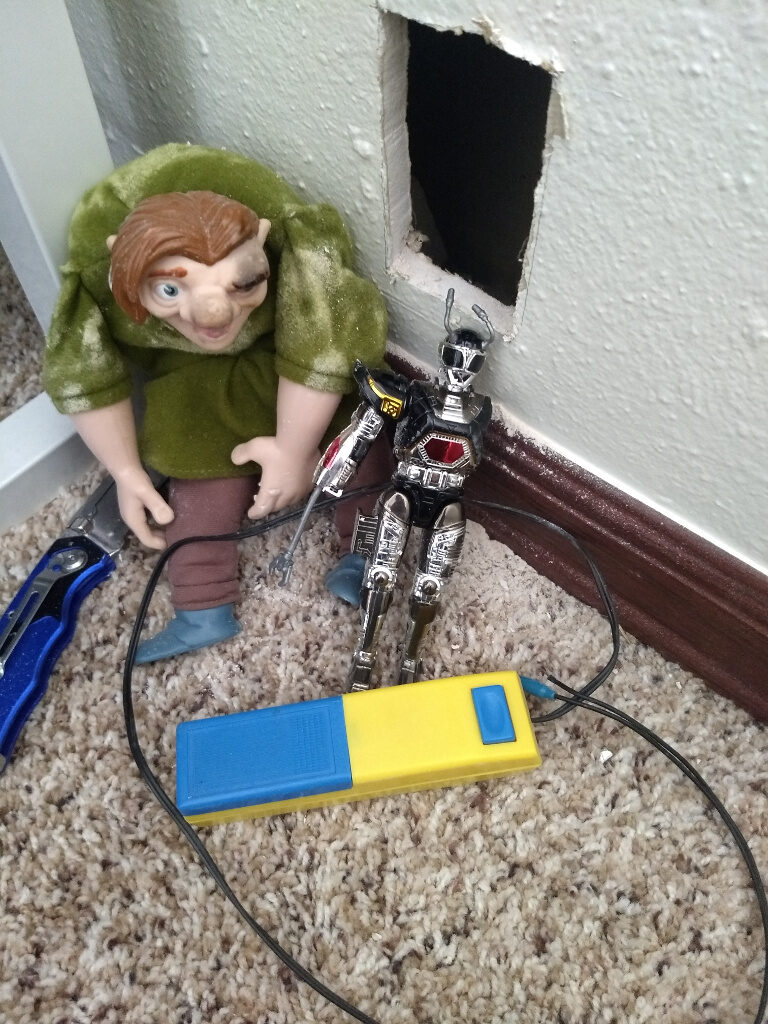Get wired for speed
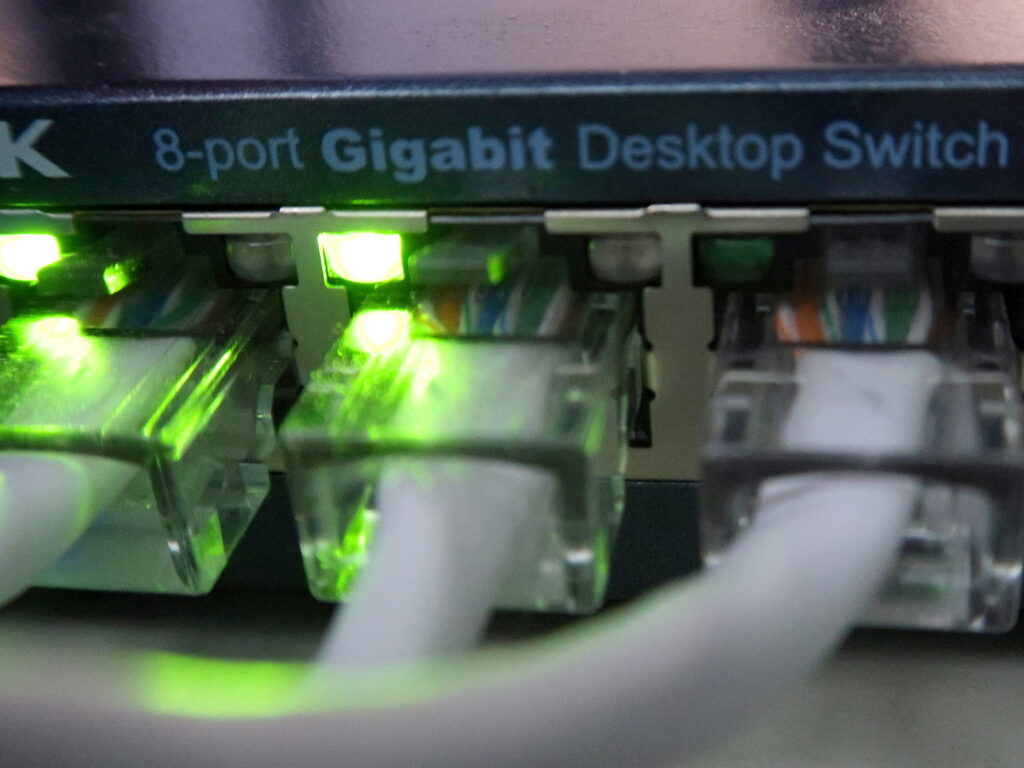
Disclaimer: As an Amazon Associate I earn from qualifying purchases
For home and/or office networking, wireless is convenient and as Wi-Fi standards evolved the performance has progressed. Despite technological advancements, wireless networking still lags behind wired gigabit Ethernet in practical use.
Here’s my mobile battle station just a few feet away from the network router connected via WiFi.
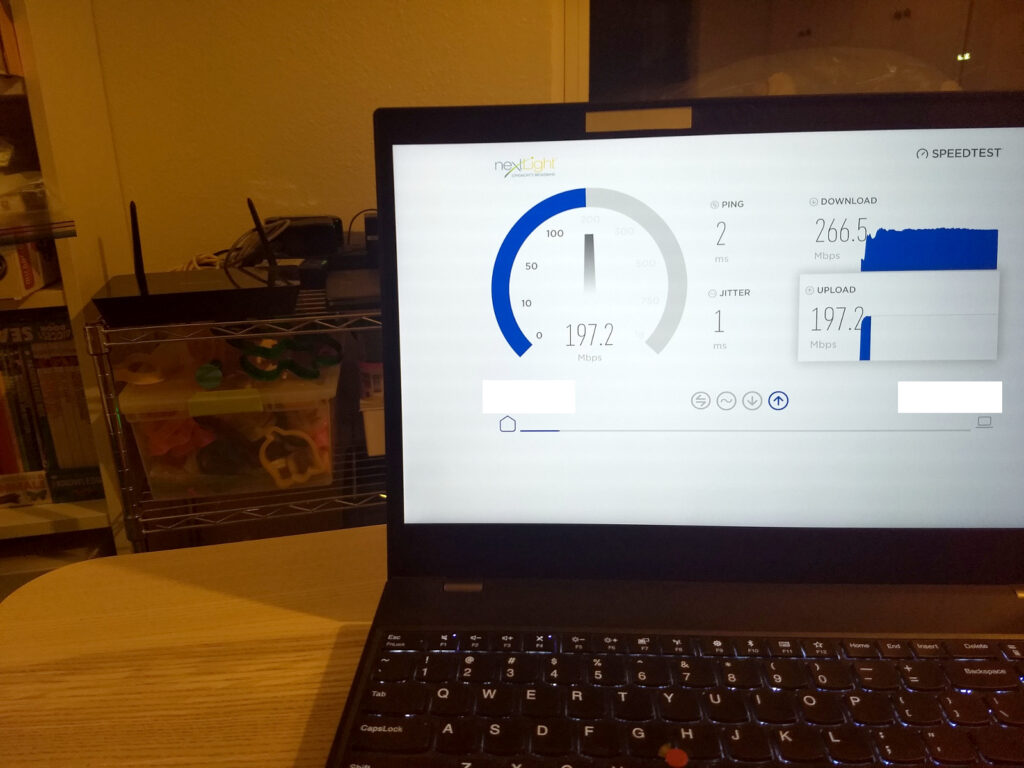
And the same laptop across the house with the same configuration (unplugged power adapter) but attached to Ethernet.
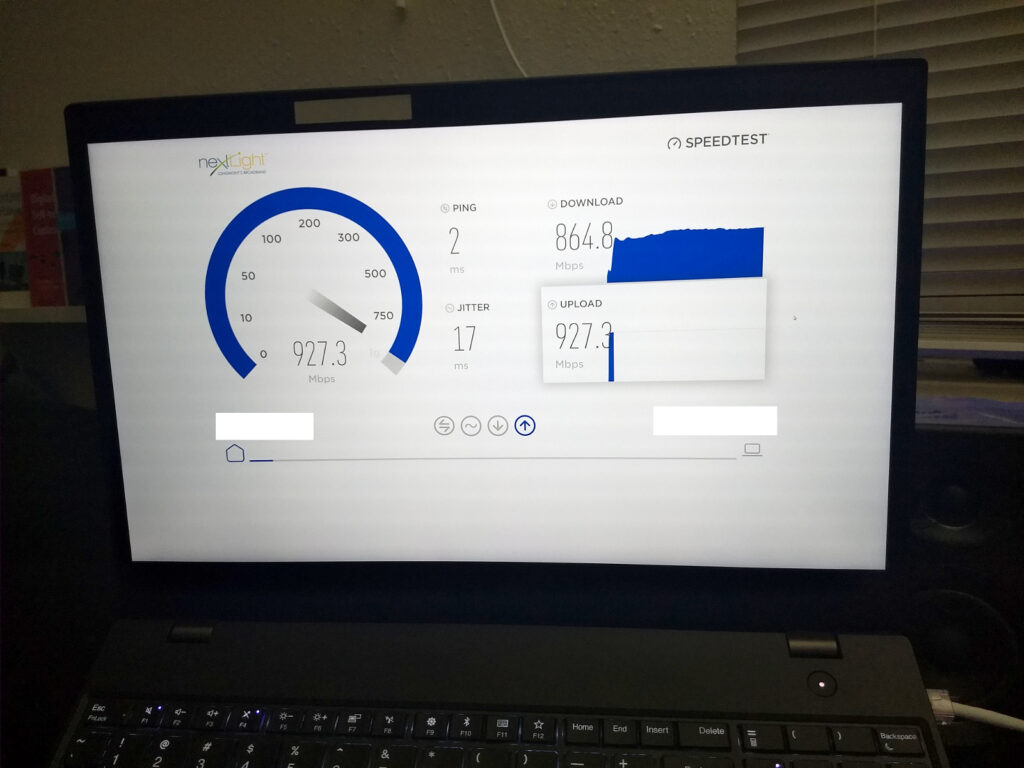
The link speed of the Ethernet connection is always 1 Gbps. The WiFi link speed fluctuates for whatever reasons and for me the reported link speed changes significantly when active vs. idle.
Even if your internet service speed is less than gigabit, local network access between computers for file/media shares, automated backup, and the like also benefit from 1000 Mbps transfer capacity. Over SSH/SFTP I usually see around 95-100 MB/s transfer rate copying large files between computers.
Got the need for speed? Good. Here’s an easy quick start:
- Obtain a Cat5e cable of desired length.
- Attach one end to the one of the gigabit ports on the router
- Attach the other end to the gigabit LAN port on your computer. –If your sleek ultra-thin laptop lacks an RJ-45 port, consider a USB-c Ethernet adapter or USB to Ethernet adapter
Do the same for another computer and you should be able to move bits between them much faster than over WiFi.
If all your computers are in the same room as your router, or you don’t mind having wires run and taped along the hallway, you’re good here. Read on if you want to possibly put in a clean and tidy installed network run within your home
**Usual disclaimers of your own risk and responsibility apply in regards to working on your own home or with permission from property owner. Only you or your hired contractor can judge the most appropriate work actions for your home configuration.
To run Ethernet throughout your home, you’ll want to start off with a Cat5e Ethernet Cable Kit that for a reasonable price should gets you a bulk supply of Cat5e cable as well as connectors and handy tools.

You have to know your home to figure how to approach your home wiring runs. I can go over what I’ve done in a few scenarios.
When I lived at home when we still had carpet, an easy and minimally intrusive method was to tuck the Ethernet cable underneath the baseboard behind the carpet edge, and terminating the ends with an RJ-45 Jack and installing it within an RJ-45 surface mount box.

A Fish Tape tool can help continue a cable run underneath a carpeted doorway.
In another home, a wood flooring project was the perfect opportunity to run network cabling within the expansion gap between the flooring and the wall.

In our present dwelling with wall to wall tile flooring already installed in half of the house, I ran the wiring through the crawl space.

With a stud finder, I was able to plan out the drop locations and cut out some drywall, drill some holes through the sub flooring and pulled the cables through.

I then finished off the wall with a low voltage mounting bracket, terminate the wires with the RJ-45 jack and installed it within a nice looking wall plate.
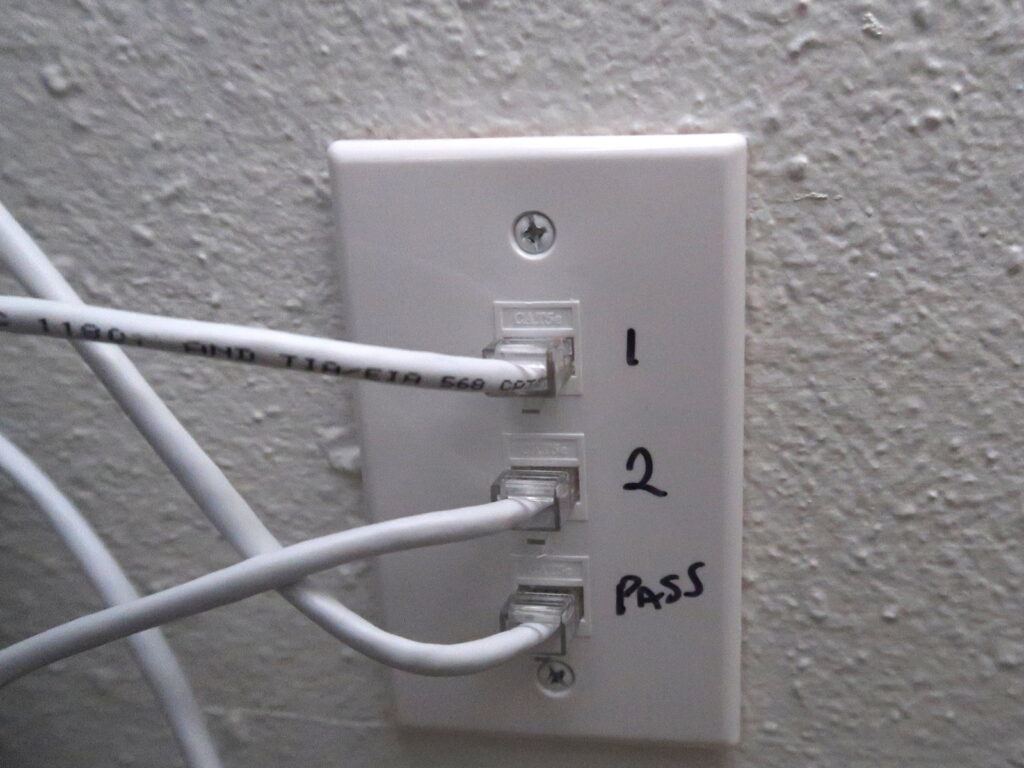
With a pair of known good Ethernet cables you can test the end-to-end connection jacks with your kit cable tester, as well as testing the custom length node cables you’ll make with the leftover bulk cable, crimps, and crimp tool.
To fan out your connections from the wall jack or wall mounted box, run a cable from the wall to a network switch, then attach the computers in the room to the switch.

With a small outlay for hardware and time commitment, you can enjoy years of reliable network connectivity within your home/office for work and leisure.
Addendum: If you do plan to cut holes within your non-new build home, be prepared for any surprises. Like, this gent and some of his buddies were hiding behind the wall I cut open.

